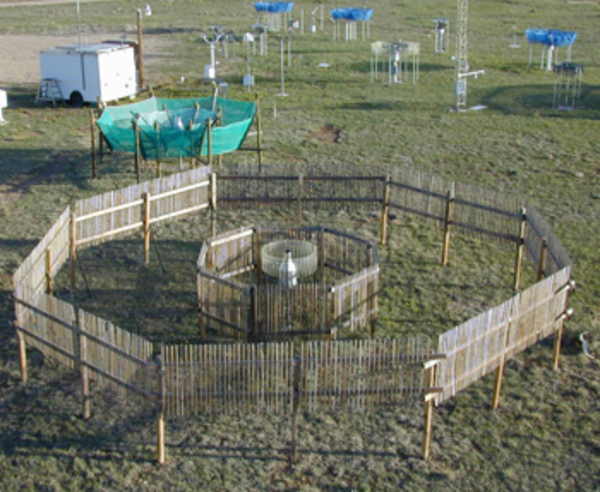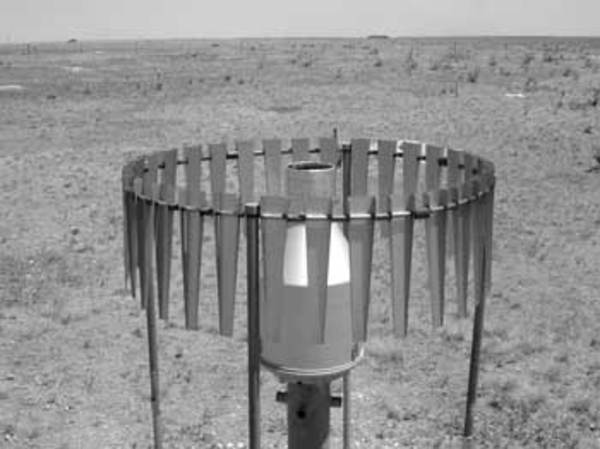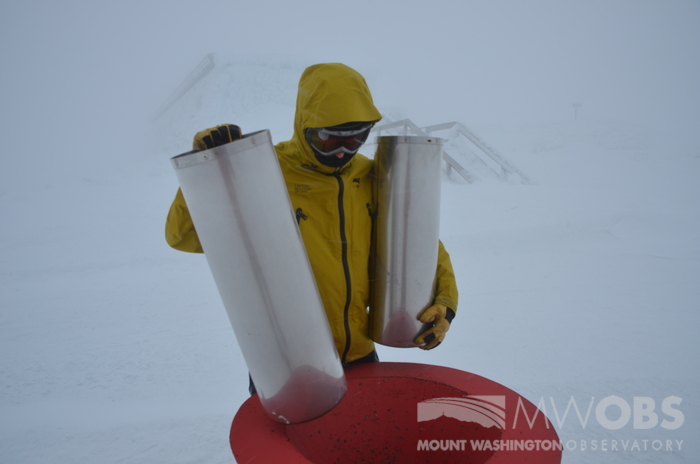Ways to Measure Snow
2018-01-30 13:22:03.000 – Taylor Regan, Weather Observer
One question commonly asked of staff up here on the summit is: How do you accurately measure snowfall in such a windy environment? The answer isn’t as simple as just using a snowboard, the way that many weather reporting stations are able to. Up on the summit, and in other windswept locales, adverse conditions have led to several innovative approaches to measuring accurate precipitation, which typically involve combining a precipitation gauge with some variant of windshield. Let’s have a look at a few here.
Precipitation Gauges
Precipitation Can – A tried and true method, the standard precipitation can is what is currently in use up on the summit of Mt. Washington. The precipitation can does not have any active measuring components; instead, it is collected at prescribed intervals and measured by an observer. In the event of snowfall, the frozen precipitation is measured and then melted, to determine the liquid equivalent. This method serves as a standard for evaluating the performance of other gauges.
Heated Tipping Bucket – A heated tipping bucket is a type of precipitation measuring device that works by directing rainwater into one of two buckets that are mounted to a pivot. As one bucket fills up (typically with 0.10 inch of precipitation) the bucket “tips” and discards the accumulated precipitation, tripping a counter, and raising the second bucket to fill up. Throughout a precipitation event, the buckets continue tipping, and the counter marks out how many tenths have been collected.
Geonor Precipitation Gauge – A collection bucket filled with anti-freeze and a small amount of oil, which sits atop the anti-freeze to prevent significant evaporation from taking place before a reading is taken. The sensor is a wire that is electrically excited and vibrates at a certain frequency. Any changes in mass of the bucket (i.e. through the addition of precipitation) change the frequency of the vibrating wire. By recording the change in frequency, one is able to determine the amount of precipitation which has fallen.
 Geonor Precipitation Gauge
Geonor Precipitation GaugeHotplate – A hotplate gauge is comprised of two heated plates, one facing upwards, and one facing downwards. Each plate is heated to the same temperature, but, the addition of snowfall cools the top plate. The energy required to keep the top plate (cooled by falling snow) at the same temperature of the bottom plate (not exposed to the falling snow) is measured, and from this ratio one can calculate the amount of snowfall which has fallen.
 Hotplate Precipitation Gauge
Hotplate Precipitation Gauge Windshields
Double Fence Intercomparison Reference (DFIR) Gauge – The DFIR gauge is comprised of two fences, one 4 meters in diameter and the second 12 meters in diameter, which enclose either a Tretyakov or Geonor precipitation gauge.
 Double Fence Intercomparison Gauge (Photo from NCAR, Roy Rasmussen)
Double Fence Intercomparison Gauge (Photo from NCAR, Roy Rasmussen)Alter Windshield – This is the most common windshield used in the United States, and is made of a series of vertical flaps or slats and is roughly a half meter in diameter.
 Alter shield (Image from: www.fs.fed.us/t-d/pubs/htmlpubs/htm02252325/
Alter shield (Image from: www.fs.fed.us/t-d/pubs/htmlpubs/htm02252325/ Nipher shield in use on the summit of Mount Washington.
Nipher shield in use on the summit of Mount Washington.
Taylor Regan, Weather Observer
Supporter Spotlight: Ryan Shepard
Supporter Spotlight: Ryan Shepard By Ryan Shepard and Carissa Milliman Ever since I was a kid, living in Western New York and growing up with lake effect snow, I thought harsh weather was incredibly
Supporter Spotlight: Erik Rider
Supporter Spotlight: Erik Rider By Wendy Almeida For Erik Rider, supporting Mount Washington Observatory comes from a lifelong fascination with weather and how it shapes daily life. Growing up along the Massachusetts coast, he
An Autumn Above the Clouds on Mount Washington
An Autumn Above the Clouds on Mount Washington By Cassie Farnsworth I don’t know how many times in life you get to say “it was exactly what I hoped it would be,” but my


